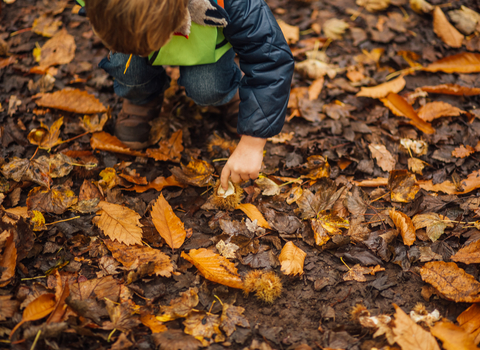What are they?
Conkers are seeds of the European horse-chestnut tree. This tree is tall, broad, and widely planted in parks and gardens. In spring, rows of horse chestnuts will provide a wonderful display of ‘candles’ – large, upright flower spikes ranging in colour from white to deep pink. In autumn, the tree will shed its spiny-cased seeds, which open to reveal shiny, smooth, mahogany seeds




